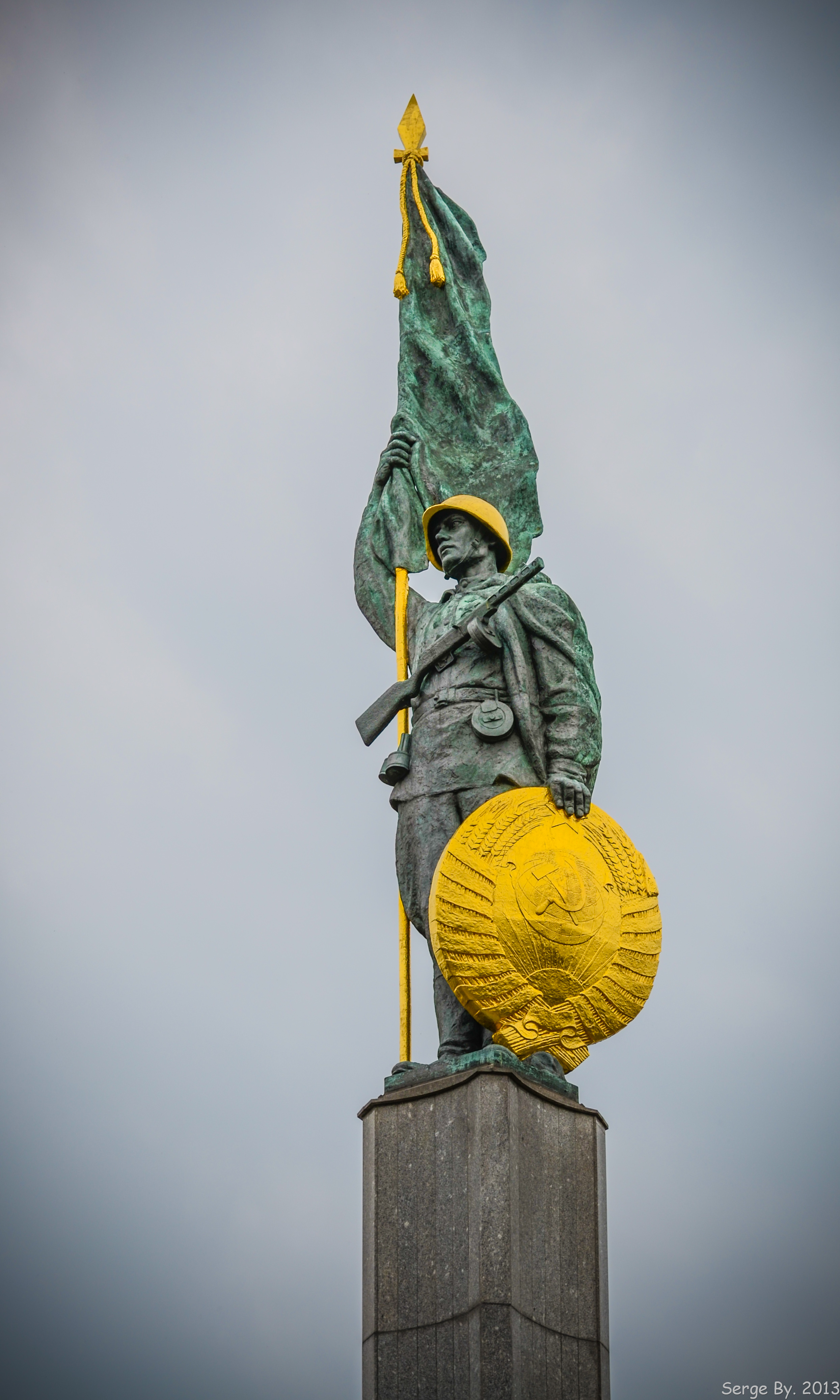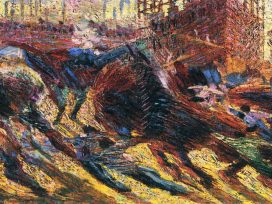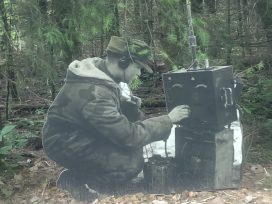This article attempts to provide an overview of research and analysis centred on the Soviet impact on postwar Austrian state and society, emphasising the literature and documentation provided in the English language. Needless to say, most treatments of bilateral relations between Austria and the Soviet Union have been written in either German or Russian and are therefore difficult for non-specialists in the field to follow.
In evaluating scholarly attempts to understand Soviet policies and politics for and in Austria from the Anschluss in March 1938 to the signing of the Austrian State Treaty in May 1955, one needs to separate literature written before 1991 from literature written after that date. While Western archives became available to serious research in the mid-1970s, at least partial access to Soviet and satellite archives became a possibility, albeit uncertain, only after the collapse of the Soviet Union. By now, the body of available literature in the former Soviet Union enables a significant level of insight into the thinking, planning, and decision-making of the Soviet authorities, both in the Kremlin and in the Soviet administration, both military and civilian, stationed in Austria. Interestingly, these newly available archival materials do not totally undermine the basic tenets and assumptions of the best of the pre-1991 analysis of Soviet policy towards Austria. Instead, they by and large consolidate some of the analytical premises established long before the demise of the Soviet Union.
The early international historical writing on the period of the First Cold War in Austria, roughly coinciding with the occupation decade, was undertaken by two Americans, one of whom had himself been a member of the Allied administration of Austria. They wholeheartedly subscribed to the theory of Soviet expansionism in central Europe, which, they argued, could only be prevented by determined Western containment and economic aid. A decade later, two major monographs by Austrian scholars were published that on the one hand dealt with the prolonged attempts to solve the “Austrian Question” at state treaty negotiations (leading to the end of Allied occupation in May 1955), and on the other addressed the concrete occupation policies of the four powers, both in their respective zones and in the inter-Allied military and later civilian government of Austria (the Allied Commission and Council in Vienna). These two painstaking studies of Allied and Austrian (inter)action in international politics and in the national Austrian arena were soundly based on primary documentation found mainly in British and American archives. By the 1980s, several outstanding yet unpublished dissertations and monographs had widened the documentary base for the study of Allied policy in Austria and in particular aided a better understanding of Allied postwar planning and policy. Special studies concentrated on issues such as crisis prevention and negotiation strategies. The publication of several massive conference anthologies (from the anniversary years 1985 to 1995) made available a body of information about the role of the Allies in the occupation decade. The 1990s brought new emphasis on research about Allied zonal politics and their regional variations.
Generally speaking, however, one can maintain that international historiography on the Cold War in its entirety has steadfastly ignored Austria as a relevant case study. Many of the standard works contain no more than fleeting references to the Austrian Cold War experience. More importantly, in the existing literature a heavy imbalance exists between studies based on documentation from the western Allied side and documentary evidence from Soviet sources. This state of research affairs could be tackled only after 1991, as it slowly became possible to consult several of the important archival holdings in Russia.
Despite these longstanding archival difficulties, a solid monographic study of Soviet policy towards and in Austria was published as early as 1977; it argued against the theory of intentional Sovietization of Austria and has remained a classic ever since. It was followed by an equally path-breaking inquiry into the economic interests of the Soviets in Austria concentrated in the Soviet holding company USIA, based mainly on Austrian documentation, which gave emphasis to Soviet economic exploitation, irrespective of possible political destabilisation motives. The Viennese scholar Oliver Rathkolb provided early and important insights into the structure and strategy behind the Soviet propaganda machinery in Austria, deduced indirectly through a study of US cultural policy in the early years of the American occupation of Austria. Further areas of research on Soviet policies pertained to the question of Austrian POWs in the Soviet Gulags, on gender problems and relations in the zone, particularly on the issue of rape, and on everyday life during the Soviet occupation. By the late 1990s, several younger historians began enquiring into the structure, function, and perspective of Soviet policies in Austria, both from the external viewpoint of Austria’s place in the international affairs of the Cold War and from the internal viewpoint of political, administrative, economical, and cultural engagement.
During the 1990s, there was a concerted effort by practically all Austrian specialists working in the field to gain access to the relevant archives in Russia. With the help of several bilateral commissions and study groups, a significant range of Soviet and Russian archives have since been consulted and mined for relevant documents. These were located at the following archives: the Archives for Foreign Policy of the Russian Federation (AVPRF); the Centre for the Preservation of Contemporary Documents (RCChIDNI); the Russian State Archives for Social and Political History (RGASPI); the State Archives of the Russian Federation (GARF); the Russian Military State Archives (RGVA); the Central Archives of the Ministry of Defence of the Russian Federation (CAMO at Podolsk); and the Russian State Archives for Contemporary History (RGANI). What was missing until recently were the archives of the Soviet Element of the Allied Commission for Austria (SCSK) and the documentation for most of the Soviet military units and commands stationed in Austria from 1945 to 1955.
The anniversary year of 2005 saw a broad range of commemorative and scholarly initiatives resulting in major historical exhibitions in Austria, for example at the Belvedere Palace in Vienna (“Das Neue Österreich”) or at Schallaburg Castle in Lower Austria (“Österreich ist frei”); a major international conference at the Austrian Academy of Sciences on “The Austrian State Treaty 1955: International Strategy, Legal Relevance, National Identity”, several major publications, both anthologies and monographs. Most importantly, however, two major long-term and bilateral projects culminated in two voluminous tomes of Soviet documents, published both in the Russian original and in German translation, covering external as well as internal issues connected to the Austrian problem between 1945 and 1955. Finally, we have been provided with insights into the concrete thinking and planning both of the nomenklatura in Moscow (in the Kremlin, in party organisations, and in the various ministries) and its political and military representatives stationed in Vienna (in the Soviet Element of the Allied Commission) and in the Soviet zone (particularly in the military formations) and Viennese sectors. This new documentation has inspired new analytical approaches and fascinating interpretative contributions.

Soviet War Memorial. Source: Flickr
Interpretations and clarifications
Austria was never at the centre of Soviet interest or engagement in Central Europe. Nevertheless, for a full decade after the end of World War II, it periodically received close Soviet attention, not least by Stalin and his highest representatives in diplomatic, military, and administrative positions. The Soviet leadership agreed in 1941 upon the restoration of Austria as an independent state within pre-1938 boundaries, separate from Germany and free of any confederated bonds, for example with Bavaria or Hungary, as envisioned by Winston Churchill. This position was confirmed in the Moscow Declaration of 1 November 1943 by the foreign ministers of Great Britain, the Soviet Union, and the United States, in which Austrians were reminded of their responsibility for fighting in Hitler’s armies. When liberation and occupation came in the spring of 1945, there was agreement among the four occupiers that Austria was to be demilitarised, denazified, and democratically reconstructed.
There is no doubt that Moscow wanted to utilize the military advantage it had gained in liberating the Austrian capital in April and in occupying the eastern part of Austria (containing approximately a quarter of the Austrian population). Moscow unilaterally installed a provisional federal government under the elderly Social Democrat Dr Karl Renner, in which the Austrian communists, under the leadership of exiled comrades, controlled the crucial ministries of the interior (i.e. the police) and of education (i.e. propaganda). While Austria was not included in the Soviet sphere of influence cutting across most of central and eastern Europe, and instead was counted among the bloc of neutral countries between Soviet and British influence, there can be no doubt that from the start Austria was earmarked for heavy economic exploitation to rebuild the industrially ravaged Soviet Union. While a brutal and immediate Sovietization was probably never intended, it was envisioned by Stalin that Austria would develop into a peaceful, Moscow-friendly state in which the creation of a broad national front would eventually lead to a non-revolutionary transition to a Socialist system. Naturally, the Austrian Communist Party (KPÖ) was to become the motor for long-term evolutionary change to a people’s democracy subservient to Soviet interests. However, the first free national elections of 25 November 1945 proved the political weakness of the KPÖ, which managed to draw no more than a meagre 5.42 per cent of the vote. Austrian electors refused to honour the Communist contribution to the Austrian resistance to Nazi occupation and aggression and instead identified the KPÖ with the Red Army’s plundering and raping. This in turn led to a more critical Soviet attitude towards the newly-elected coalition government under Leopold Figl, leader of the national conservative Austrian People’s Party (ÖVP), and to a marked increase in Soviet propaganda in Austria. Communist attempts to forge a merger of the two leftwing parties were steadfastly resisted by the Socialist Party (SPÖ) leadership from early on.
In the spring of 1946, the Soviets must have realized that Austria was not as attractive ideologically as it was economically. This change of policy was already hinted at by the personal assessment of an eastern European diplomat who in 1946 intimated that “when the Russian economic needs are satisfied, the Red army will leave the country.” Indeed, Soviet concurrence with the terms of the Second Allied Control Agreement of 28 June 1946 seems to indicate that Moscow was willing to soften its strategies of political domination in Austria and instead tighten its economic grip on Austrian economic assets within the Soviet zone even more. Within days of signing the new Control Agreement, the Soviets published General Order 17, which placed all of the formerly German-owned properties under the management of the so-called Administration of Soviet Properties in Austria (USIA). In doing so, it expropriated over 450 formerly German-owned businesses and placed almost all Austrian oilfields under Soviet administration via the so-called Sowjetische Mineralölverwaltung (SMV). Austria was Europe’s third largest oil producer (after the Soviet Union and Romania) and the Soviets had taken hold of these oil fields in April 1945. Initially, the Soviet holding company USIA accounted for about 30 per cent of the industrial output of the zone, at the peak of its operations controlling about 10 per cent of the Austrian workforce, altogether some 50 000 employees. At this time (August 1946) the Soviet Military Bank (SMB) was created, which was to handle all the financial transactions of the USIA. By 1953, the value of these USIA firms had dropped dramatically due to lack of investment and general neglect. By then, most of the USIA enterprises had proven unable to compete with similar firms in western Austria; the USIA system was no longer an incentive for the Soviets to remain in Austria. By 1955, the majority of the companies was close to bankruptcy or heavily indebted to the Soviet Military Bank.
In 1946, and more determinedly in 1947, leading functionaries of the KPÖ tried to convince their Soviet comrades that a separation of Soviet-controlled eastern Austria from the rest of the country would be beneficial to Soviet interests in Austria. They seem to have been supported by their Yugoslav counterparts, then still in line with Moscow. By February 1948 – curiously at the time of the Communist takeover in Prague – Moscow made it absolutely clear to the KPÖ leadership that the separation of Austria was against Soviet interests and therefore to be avoided; such a small territory in eastern Austria would prove to be a liability rather than an asset, economically and strategically. The Austrian Communists had to obey. Similarly, there had not been much Soviet objection when the KPÖ decided to leave the coalition government in November 1947, nor was there wholehearted support of the prolonged strike in autumn 1950. When it was over, there were even Soviet complaints about having lost days of production.
The Austrian Communists were unable to increase their political support at the elections of 1949 and 1953. By then, Moscow must have come close to the end of its illusion of a peaceful transition to Socialism in Austria with the KPÖ as its vanguard.
What about the Soviet attitude towards a treaty with Austria leading to a withdrawal of Allied occupational troops? In 1946, when Washington urged the commencement of such Allied negotiations, foreign minister Molotov was in no hurry whatsoever. The stationing of troops in Austria provided international legitimacy for a continued Soviet military presence in Hungary and Romania. By 1948, the Western Powers broke off treaty discussions due to events in Budapest and Prague, as well as continued Yugoslav territorial claims on Austria’s southern border. When treaty discussions were restarted in early 1949, it seemed as though Moscow was willing to negotiate seriously, having abandoned its support for these Yugoslav claims. There was new agreement on the difficult questions of German property in Austria and on Austrian reimbursements in connection with the Danube Navigation Company (DDSG) and Soviet oil interests. Yet Stalin hesitated to give up Soviet military presence in eastern Austria, and the talks stalled again, this time for an extended two-year period, characterised by Cold War tensions in Korea. In the spring of 1952 Stalin’s (in)famous notes on the neutralisation of Germany also revived the issue of the State Treaty with Austria. At the same time, the Western Powers initiated the Short Treaty with Austria as a condition for negotiations about Germany. For Austria there was no escaping the paramount issue of Germany.
There the matter remained until Stalin’s death in March 1953. The struggle for succession seemed to open new perspectives and certainly brought significant alleviations in the Soviet occupation regime, leading to a sizeable release of Austrian POWs and to Soviet willingness to pay for its own occupation costs. Only when Nikita Khrushchev finally emerged in early 1955 as the dominant force in the politbureau did Molotov’s foreign policy monopoly begin to be eroded and a new Austrian course under the banner of “peaceful existence” become possible. The rest was achieved within weeks. Final negotiations in Moscow and Vienna secured the signatures of all four occupiers under the Austrian State Treaty on 15 May 1955. Its price – permanent Austrian neutrality – was enacted in the Austrian parliament on 26 October 1955. This memorable date has since become the Austrian national holiday.
Concluding thoughts
The question as to why the Soviets finally decided to abandon their military presence in eastern Austria in the spring of 1955 and to agree to a negotiated withdrawal has preoccupied historians ever since. Clearly, the Kremlin leaders had ideological, geo-strategic, and economic reasons. They had long since recognised that Austria was not to be incorporated into the Soviet postwar empire, not even by gradual means. Khrushchev chose Austria as a showcase for his new, more flexible policy of “peaceful coexistence”, thereby forcing President Eisenhower to adjust his strategy and agree to meet the new Kremlin master for summit diplomacy in Geneva. The neutralisation of Austria also stopped the latent impetus for Austrian integration into western Europe and at the same time drove a wedge between the northern and Mediterranean flanks of NATO. The German question had for years hindered and blocked progress in the Austrian question. Now the former opened the way for the latter. But Adenauer made sure it was not to become a model for Germany.
Economically and financially, the value of Austrian reparations had by then diminished dramatically. USIA was facing bankruptcy and the cost of occupation to the tune of 36 million Austrian shillings annually since 1953 may have made the leaving easier. In the words of one analyst, “the Soviets had become not only disinterested in Austria, but eager to leave.” Not so Molotov, who shortly before his death in 1986 still bewailed Moscow’s withdrawal from Austria and Soviet inability to “democratize” Austria.
From a domestic perspective, it must be acknowledged that there were highly talented and effective statesmen and diplomats among the Austrian political elites of the postwar decade who were able to steer the country through the numerous maelstroms during the aftermath of war and the First Cold War and who managed to grasp the fleeting chance momentarily offered in the spring of 1955. They had built a “secret alliance” with Western statesmen, yet knew that the key to freedom and independence lay with Moscow. They were matched by keen observers in Western capitals, who quickly learned to realistically assess Soviet motives and policy. The annexed excerpt from one of these impressive estimates by the British Joint Intelligence Committee from the summer of 1948 bears witness to this type of sagacity.
Appendix
From: Joint Intelligence Committee Report “Russian Interests, Intentions and Capabilities”, 23 July 1948. In: TNA, PRO, CAB 158/3
[…]
Austria
269. The main strategic importance of Austria to the Soviet Union is as a focal area for communications in Central Europe. Austria is also of importance to the Soviet Government as a “western-minded” country in which their victory has given them a military footing, and as a potentially valuable channel for their political infiltration of Western Europe. The Soviet leaders’ Government may also be assumed to realise the importance of the traditional key position of Vienna in the economic and cultural life of Central Europe. Austria’s participation in the European Recovery Programme is naturally a development of considerable importance to the Soviet Union. Taken together with successful Austrian resistance to Russian pressure over the past year and the increasing support of the Western Powers, it must have brought home to the Soviet leaders the possibility of a postponement of their plans to absorb Austria and must consequently have increased the urgency of devising new tactics to overcome Western pressure.
270. The Soviet Union’s object remains to secure a subservient Communist Government in Austria. She realises, however, that in present circumstances her chances of achieving this are slight. Until recently the Soviet Union concentrated on ensuring the immediate objective of preventing Austria from reviving under Western influence and from acting as a channel for the penetration of that influence into South-East Europe. Her methods to this end consisted primarily in the maintenance of Russian troops in Austria and opposition to any early settlement of the Treaty, except on terms which would give her indefinite scope for interference in the internal affairs of the country. This was the dominant policy in the treaty negotiations through 1947. When, however, the December Conference of the Council of Foreign Ministers broke down over Germany the Soviet Union grasped at the opportunity of keeping the Austrian discussions alive, and the subsequent negotiations of the Deputies in the spring of 1948 clearly indicated that they were now prepared to envisage the conclusion of a Treaty, with its corollary of the withdrawal of the occupying forces. This change in policy may be regarded as being due firstly to the realisation that the present situation in Austria is working out progressively less well for the Soviet Union, and that the advancement of their aims through the continuation of the occupation regime has been halted. Secondly, it may be due to the hope that a withdrawal of all Allied forces would offer a better chance of exerting pressure on Austria, both externally and internally, especially after the successful Communist coups in Hungary and Czechoslovakia.
271. The particular question of “German assets”, which so long proved the main obstacle to the conclusion of a Treaty, and was apparently the chosen instrument of Soviet economic and political penetration, has declined in importance owing to the unsuccessful operation by the Russian authorities in Austria of the factories, etc., which they have seized, and to the alternative prospects offered to Austria’s economy by the European Recovery Programme. It seems probable therefore that the Soviet Union is no longer relying so much on this particular channel of influence as on normal Russian methods of political pressure, propaganda and infiltration. This is evinced by their acceptance (under pressure) of a form of settlement of the German assets question, which will not in itself give them the extensive means of interference in all branches of Austria’s economy originally claimed. Nevertheless, the Soviet Union is due to gain a valuable asset in the spheres of oil extraction and exploration (amounting to some 60 per cent and 50 per cent respectively of the total area in Austria). Their possession of the Zistersdorf oilfields has furthermore been used as a basis for forming a corps of factory guards (Werkschutz) some thousands strong and efficiently armed, which may well prove a source of danger, whether before or after the end of the occupation, particularly whilst the equipment of the Austrian Gendarmerie is inadequate and until an Austrian Army has been formed, armed and trained.
272. The Soviet Union has so far refrained from action that would precipitate the partition of Austria on the German model, and such a contingency would probably only be of value to her from the purely military point of view, i.e., if war seemed imminent. There is, however, no reason to believe that she has prepared to abandon Austria completely. All that can be said is that she appears to have recognised the limits which existing conditions in Austria impose on the extension of her influence, and consequently to be willing, if not anxious, to avail herself of the advantages which she may gain under a peace treaty.
[…]







